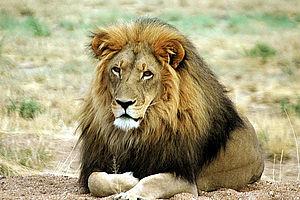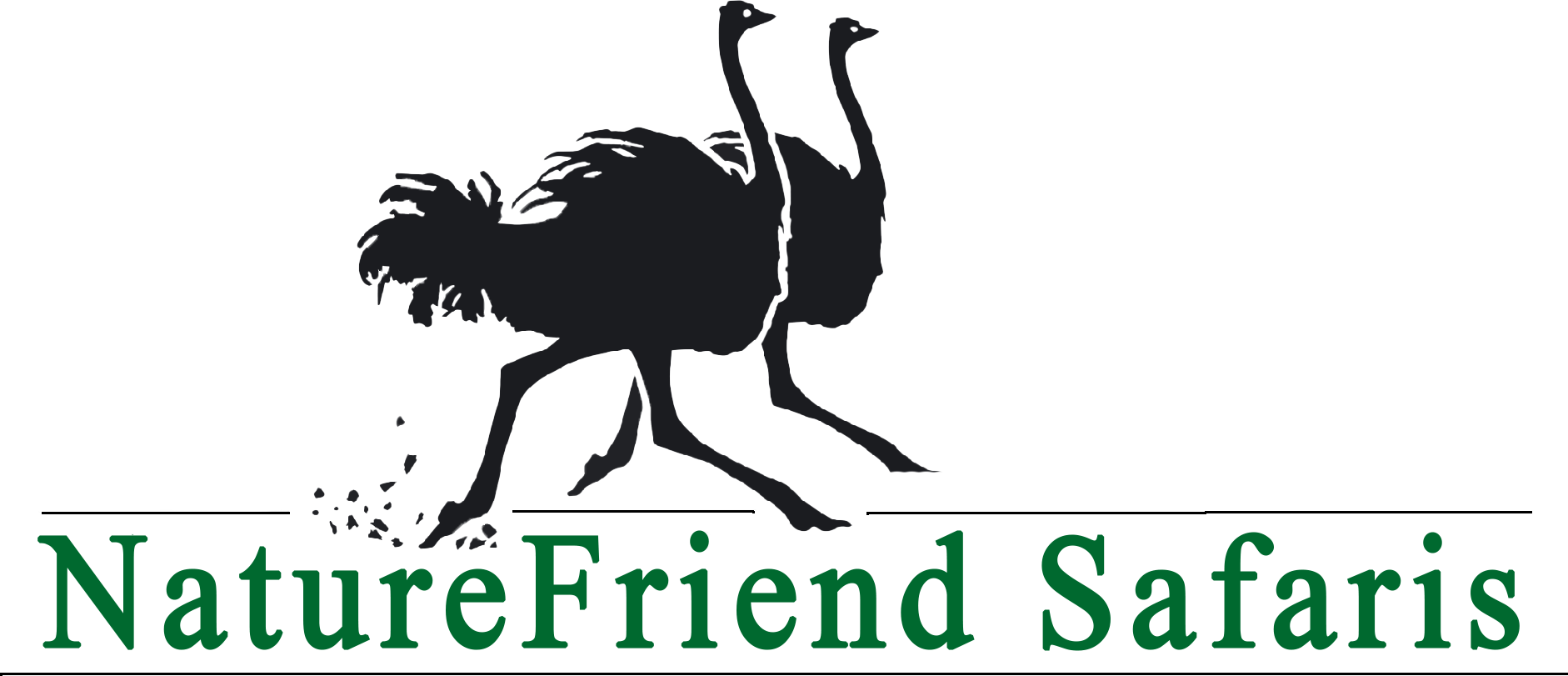In Asia the tiger, Lord of the Forest,
faces extinction in the wild.
Is it unrealistic to think that at some date
in the future we may no longer be able to
hear the deep-throated rumble of the King
of Beasts living free in the African bush?
The onomatopoeic pronunciation of African languages reflects a throaty sound when uttering Simba in KiSwahili, Tau in Setswana, and Xam in Damara-Nama. An Arabian saying is that the brave man is frightened three times: once when he sees the huge pugmarks, a second time when he hears the roar, and the last time when the tawny form appears. Thereafter he knows no fear. Panthera leo formerly ranged unfettered across northern Africa and south-western Asia, west into Europe (where it became extinct at the time of Christ), and east into India. Only India’s relict population, the Gir Forest lions remain intact, with 300 – 400 surviving. The sobering thought is that worldwide, lions have lost about 98% of their former geographical range, in terms of area, mostly to their rival human predators. Furthermore, 100 000 lions are estimated to have inhabited Africa’s savannas and semi-deserts 100 years ago. Two of the six races of lions, the Barbary lion of the Atlas Mountains in North Africa and the Cape lion from South Africa, were eliminated by the end of the 19th Century. Four races remain, being the West African, the East African, the South-eastern African and the South-western African populations. Latest expert approximations are as few as 16 500 to at most 30 000 free-living lions. These figures result in classifying lions as “Vulnerable”. Projecting this despondent descent, we see that if present trends continue, the last free-living lion may succumb within the next few generations of people.
Can anything be done to halt and possibly reverse this decline? Presently, a team of experts in lion research and conservation are making this their ultimate goal. The African Lion Working Group, in conjunction with the World Conservation Union’s Cat Specialist Group, are compiling innovative approaches to ensure that Africa’s lions do not follow other large mammal species such as the zebra-related quagga Equus quagga into oblivion. Using a set of stringent standards to determine ”Vulnerability”, the experts say lions are significantly associated with grassland and scrubland, they have a medium geographic range of 5 to 9 million km2, a large body size, and are actively persecuted outside game reserves because of their potential danger to humans and domestic animals. A further factor facing lions is that they are the only truly social cat species in the world. In nearly all other feline forms, males and females stay together for mating only, the masochistic male departing his responsibility when the female is pregnant. Being social has its advantages and disadvantages in lions, as well as in humans. Lion survival is ultimately dependent on the pride system, which needs sufficient natural habitat with medium to large-sized prey species. Individual lions have little chance of survival. A pride is relatively conspicuous, by leaving distinct tracks and evidence of its presence, making it simple to locate by people bent on its destruction.
When thus evaluated, lions rank under “Vulnerable Category 2(A)”, putting them at equal risk for extinction as the tiger, cheetah, Asian snow leopard and South American jaguar. This effectively sentences these large cat species to be candidates for the “Endangered”
list if the present declining trend in their numbers continues. Once in the Endangered Category, the possibility of Extinction in the near future emerges.
What about tigers? Can we learn anything from threats to Panthera tigris that will help us save the lion? Looming large on conservation’s ‘Tiger Red Alert’ are numbers of people versus numbers of tigers. Asia’s human population is booming. Recently, India passed the one thousand million mark, making it the next most populous country in the world after China. Half the Earth’s six billion humans live where tigers roam. The chain of events is predictable – more people mean more natural habitat destruction, which in turn means less natural swamp and forest and natural prey species. Three of the eight tiger sub-species are extinct. The total free-living population is estimated at about 5 000, down from 40 000 a hundred years ago. Incredible as it may seem, there are now more captive tigers in safari parks, zoos and private homes in the USA (about 7 000) than there are in the wild! Free-living tigers face a overwhelming array of human harassment – apart from habit loss and diminished numbers of natural prey, tigers are literally taken apart and reduced to pathetic portions of skin, bones, teeth and fat, while their reproductive organs are used to supposedly enhance virility. From its whiskers to its tail, every piece of the tiger has imagined curative, preventative or aphrodisiac value. Human cunning has even managed to produce fake tiger penises for sale to a gullible public. If your taste borders on the bizarre, you can order a bowl of genuine tiger penis soup, paying U$300 dollars a serving, in specialty restaurants located in the Far East. When the last wild tiger has gone, will lions become the focus of human demand?
Let us fantasize, for a moment, that the tables are turned – what if lions (and tigers and all the other large cats) outnumbered humans? What if we had not invented our technology and remained simple hunter-gatherers? Would the great cats take pity on us and save us from their predatory instincts? No, they see us as a competitor for the same food source…and they see us as food. We would disappear as a species, hunted into oblivion by these masters of stealth and cunning. There is no altruism in the ultimate predators. However, in the real world of man and machines, fortunately for people and unfortunately for lions and tigers, our unique ability to think and reason has produced a species so capable, so adaptable……..and so deadly……..that the other great predators don’t stand a chance. As we evolved, we also developed a diversity of cultures, languages, beliefs, religions, arts and norms of behaviour. These bring out the best, and the worst, in us. Indelibly imprinted in our distant atavistic memory, lies an inborn fear as we sought safety huddled around a fire, while being stalked and eaten by sabre-toothed cats. In our modern life we perceive tawny lions and striped tigers in vastly different ways. To the successful professional person, well educated and well endowed with money and material benefits, lions are animals to be admired, enjoyed and captured as digital images on high-resolution cameras. These are later displayed to family and friends as proud proof of our “success” as contemporary, non-consumptive hunters. Such people are, unfortunately for lions, relatively few in numbers. At the other end of the human scale, unfortunately also for lions, are the vast majority of relatively uneducated, ignorant, subsistence-living people of the earth. They historically perceive lions as feared invaders of their and their domestic animals’ safety. The only good in a lion is when its body parts can be used to adorn clothing, as additives for traditional medicine, or eaten to provide them with a predator’s prowess. Seen in a larger context, the words of an educated African ecologist ring true – “You can’t preach conservation to an empty stomach”.
Years ago, in the house of an elderly conservationist in Kenya, I saw a framed phrase that said simply, yet tellingly:
“And somewhere lions still roam,
Unaware in their strength
Of any weakness”
The old conservationist is no longer there but the words still drift as a thought across Africa’s savannas, merging with lions as they pad on powerful paws into an uncertain future.
Text by Dr. Hu Berry
Originally published by Venture Publications in ‘Flamingo’ November 2005

